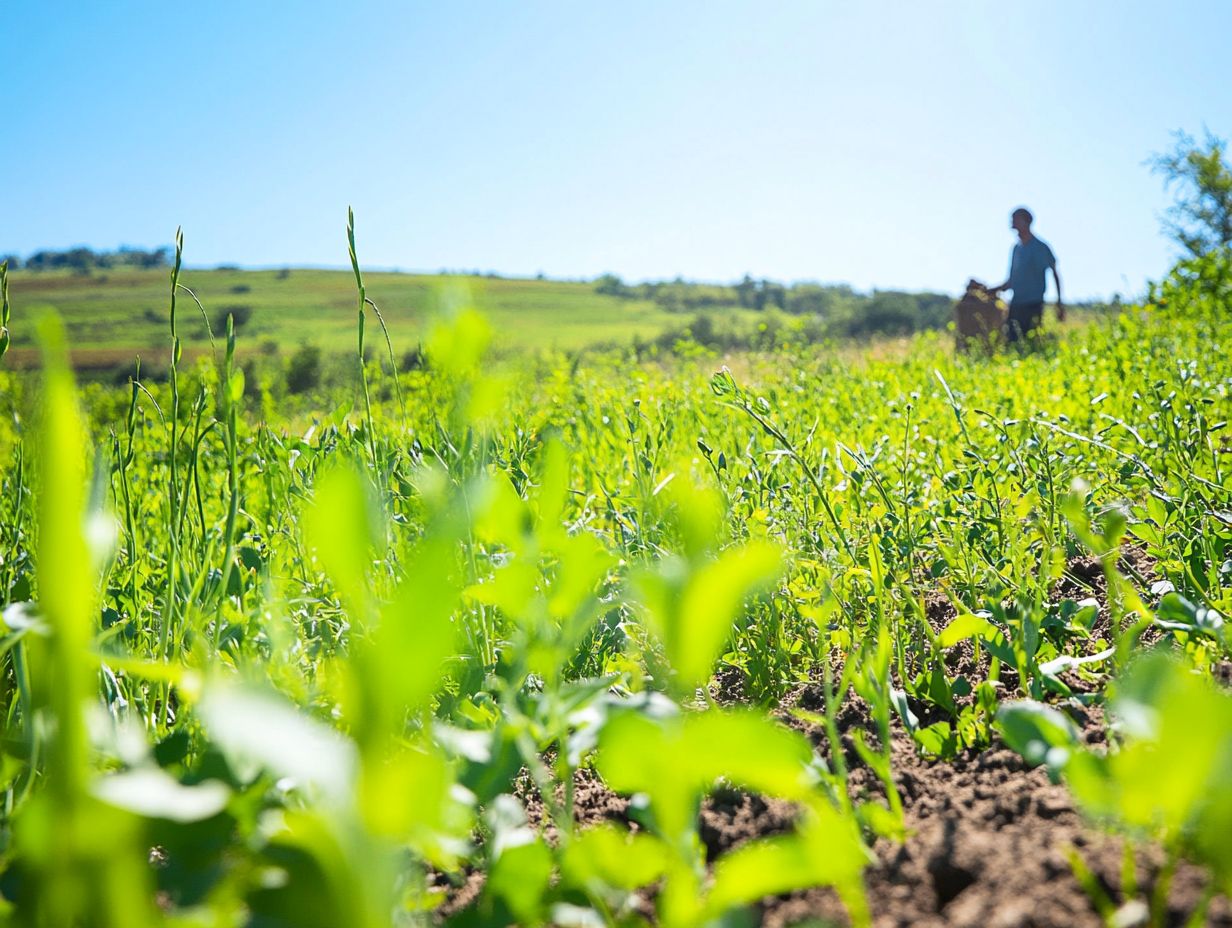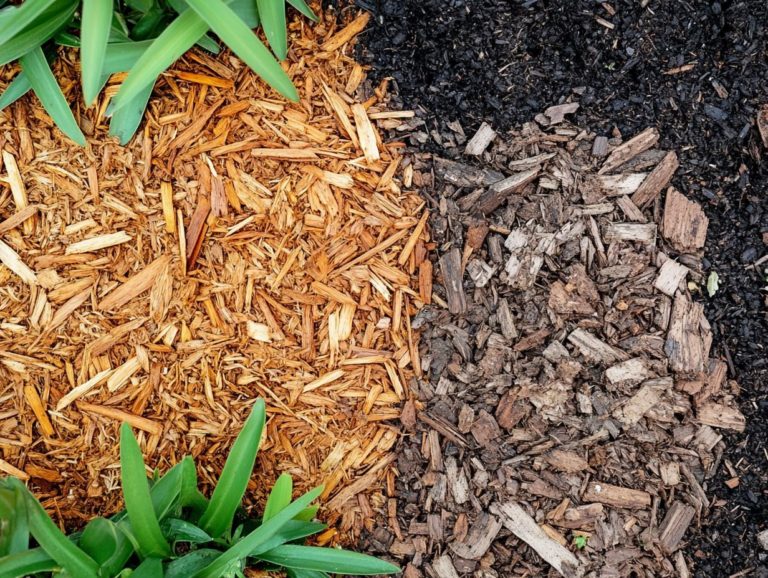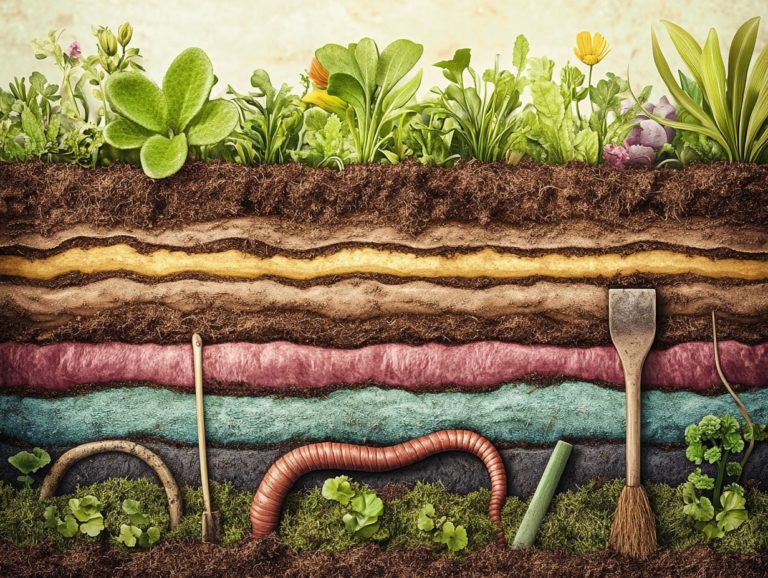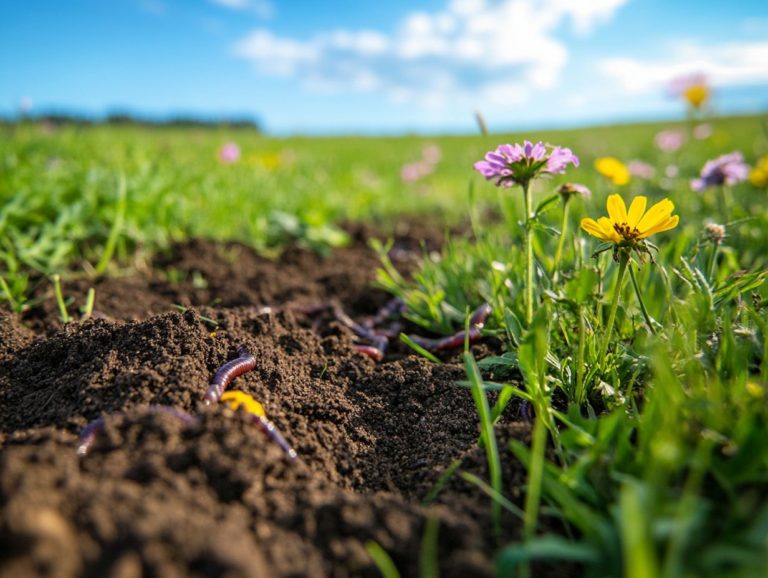The Benefits of Using Green Manures
Green manures are a vital component of sustainable agriculture, offering a natural approach to improving soil quality and helping plants grow strong.
This article delves into the essence of green manures, examining their diverse types and functions. You will also find practical tips for selecting the ideal green manures suited to your soil type and effectively incorporating them into plans for planting different crops over time.
Discover the amazing benefits of green manures and create a flourishing garden!
Contents
- Key Takeaways:
- What are Green Manures?
- How Green Manures Benefit Soil and Plants
- Using Green Manures in Organic Gardening
- Best Green Manures for Different Types of Soil
- How to Incorporate Green Manures into Crop Rotation
- Frequently Asked Questions
- What are green manures and why are they beneficial?
- How do green manures improve soil health?
- What are some common types of green manures?
- Do green manures provide any other benefits besides improving soil health and structure?
- Are green manures easy to grow and incorporate into the soil during the planting season?
- What is the best time to plant green manures for optimal soil improvement?
Key Takeaways:

- Green manures are cover crops that provide numerous benefits to soil and plants, including nutrient enrichment and weed control.
- They are essential for organic gardening, offering practical and sustainable solutions to improve soil health and crop growth.
- Choosing the right green manures for your specific soil type and incorporating them into crop rotations can maximize their benefits and yield successful harvests.
What are Green Manures?
Green manures are a vital component of agricultural excellence. They involve cultivating select plants, particularly legumes, to enrich soil organic matter and boost soil fertility. Often referred to as cover crops, these plants are chosen for their remarkable ability to fix nitrogen the process where certain plants, like legumes, take nitrogen from the air and make it available for the soil.
By implementing green manures, you enhance soil structure and unlock substantial benefits for market gardens and varied farming operations. This practice nurtures a healthier ecosystem and promotes enduring agricultural productivity, ensuring fruitful results for years to come.
Definition and Types
Green manures are crops intentionally cultivated to enhance soil health. They come in various types, including legumes like red clover, hairy vetch, and sweet clover, as well as non-leguminous options such as buckwheat and ryegrass. Legumes are champions of nitrogen fixation, enriching the soil and paving the way for healthier subsequent crops. Non-leguminous green manures excel at providing excellent soil coverage, which helps prevent erosion and suppress pesky weeds.
For example, buckwheat is renowned for its ability to outcompete unwanted vegetation while simultaneously improving soil structure. Ryegrass has significant value as well, thanks to its deep root system that enhances soil aeration and water retention. By recognizing these differences, you can select the ideal green manure to maximize your soil’s potential and foster sustainable agricultural practices.
How Green Manures Benefit Soil and Plants
Green manures offer many great benefits for both soil and plants, primarily by boosting soil fertility through increased organic matter and efficient nitrogen fixation.
As these cover crops break down, they release vital nutrients into the soil, enhancing its overall structure while minimizing the risk of nutrient leaching and soil erosion.
Using green manures strategically helps in effective weed control, fostering optimal growth conditions for the subsequent crops in a thoughtfully designed crop rotation system.
Nutrient Enrichment and Weed Control

One of the primary benefits of using green manures is nutrient enrichment. These plants significantly boost soil fertility by enhancing essential nutrients and promoting nitrogen fixation, a process where certain plants help add nitrogen to the soil.
Incorporating green manures into your farming practices elevates the levels of critical nutrients such as phosphorus, potassium, and magnesium in your soil elements vital for robust plant growth. When these crops are turned into the soil, they decompose and release essential micronutrients, thereby improving overall soil health and structure.
Green manures also act as a natural barrier against the invasion of weeds. Their dense foliage blankets the soil, suppressing unwanted plant species while competing effectively for vital resources like light, water, and nutrients. The dual benefits of nutrient supplementation and efficient weed control position green manures as a sustainable choice for enhancing agricultural productivity.
Using Green Manures in Organic Gardening
Incorporating green manures into your organic gardening practices offers an effective and sustainable method for managing soil, especially in market gardens and vegetable crops.
This approach not only facilitates composting but also significantly enhances the overall health of your soil, setting the stage for thriving plants and bountiful harvests.
Practical Applications and Techniques
Practical applications of green manures require careful planning, especially when it comes to timing your planting to align with the ideal growing season and current soil conditions.
To maximize the benefits, explore various techniques for incorporating these plants into your growing cycle. For example, late summer and early fall are prime times to sow certain legumes, which not only fix nitrogen in the soil but also act as a protective barrier against erosion during winter months.
Additionally, consider interplanting spring cover crops before establishing your summer vegetables; they ll provide essential nutrients and enhance soil structure. Different cover crops, like rye or clover, can significantly improve soil health by adding organic matter and fostering beneficial microbial activity.
By understanding these techniques, you can fully harness the potential of green manures, leading to richer and more resilient soil ecosystems in your garden.
Best Green Manures for Different Types of Soil
Selecting the best green manures for your specific soil types is essential to unlocking their full potential. Certain legumes and cover crops thrive under particular soil conditions, significantly enhancing soil organic matter while minimizing nutrient leaching.
By making informed choices, you can effectively improve your soil health and foster a more sustainable growing environment.
Matching Cover Crops to Soil Needs

Matching cover crops like legumes to the specific needs of your soil is vital for enhancing soil fertility and organic matter, allowing you to craft a tailored approach to sustainable agriculture.
By selecting the right leguminous plants, you can significantly boost your soil s health and productivity. For instance, varieties such as crimson clover and field beans are renowned for their nitrogen-fixing abilities, enriching nutrient-poor soils and making them more suitable for future crops.
Understanding the pH, moisture levels, and existing nutrient content of your soil is essential for making informed choices. Legumes not only help prevent erosion and suppress weeds but also support beneficial microbial activity, ultimately fostering a more resilient ecosystem.
By considering these factors, you can strategically utilize green manures to cultivate a flourishing agricultural environment.
How to Incorporate Green Manures into Crop Rotation
Incorporating green manures into your crop rotation systems can greatly enhance soil nutrients, improve soil structure, and promote effective nitrogen fixation. This powerful strategy not only enriches your soil but also turbocharges your overall crop productivity. Don’t miss out on the chance to boost your soil’s health with green manures today!
Maximizing Benefits with Proper Rotation
Maximize the benefits of green manures by planning your crop rotation wisely. This boosts soil fertility, enhances nitrogen levels, and helps manage weeds effectively.
This amazing practice enriches the soil and creates a thriving ecosystem that boosts microbial activity. By carefully selecting the crops to follow green manures, you can promote optimal nitrogen levels while reducing the risk of pests and diseases.
Implementing different rotation strategies leads to healthier soil thanks to varied root structures and nutrient uptake that enhance overall soil structure and water retention.
Rotating crops with green manures also helps suppress weed growth, cutting down on the need for chemical herbicides and contributing to a more sustainable approach to farming.
Frequently Asked Questions
What are green manures and why are they beneficial?

Green manures are plants grown to be tilled or mulched into the soil, improving its health and fertility. They add organic matter and nutrients, making the soil good for plants.
How do green manures improve soil health?
Green manures add organic matter to the soil, providing food for beneficial microorganisms that help break down nutrients for plants. They also enhance soil structure, making it more porous and able to hold water and nutrients.
What are some common types of green manures?
Common types of green manures include legumes like clover and alfalfa, grasses such as rye and wheat, and cover crops like buckwheat and oats.
Do green manures provide any other benefits besides improving soil health and structure?
Yes! Depending on the type of green manure used, they can also suppress weeds, attract pollinators, and provide habitat for beneficial insects.
Are green manures easy to grow and incorporate into the soil during the planting season?
Yes, green manures are relatively easy to grow and can be sown directly into the ground. They require minimal maintenance before being tilled or mulched into the soil.
What is the best time to plant green manures for optimal soil improvement?
The best time to plant green manures is in late summer or fall, after harvesting crops. This timing allows them to establish and grow before being tilled or mulched in the spring.






